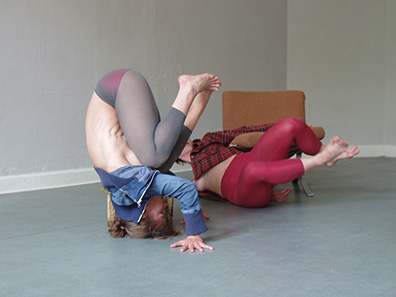
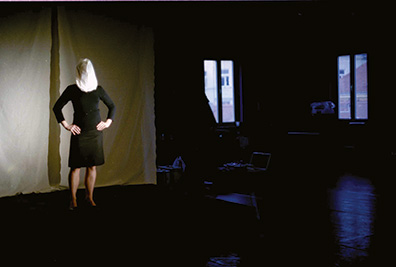
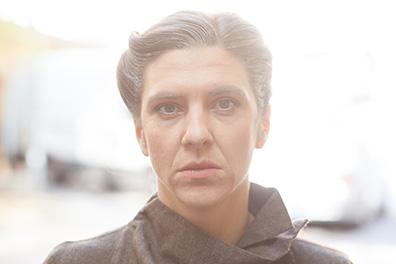
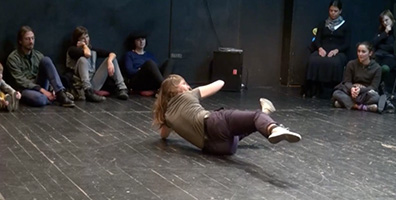
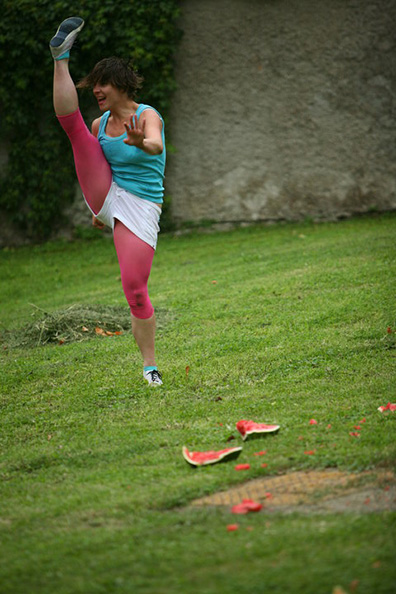
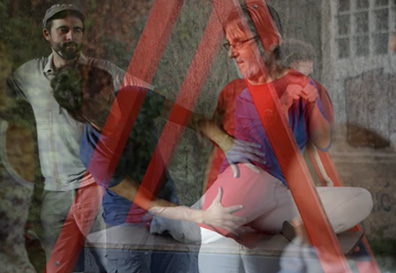
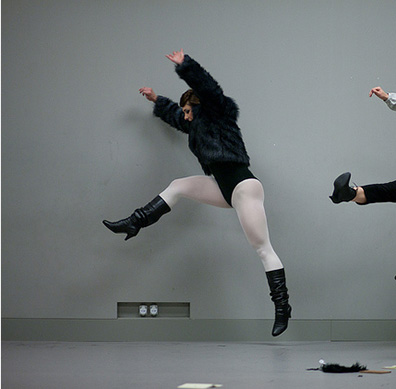
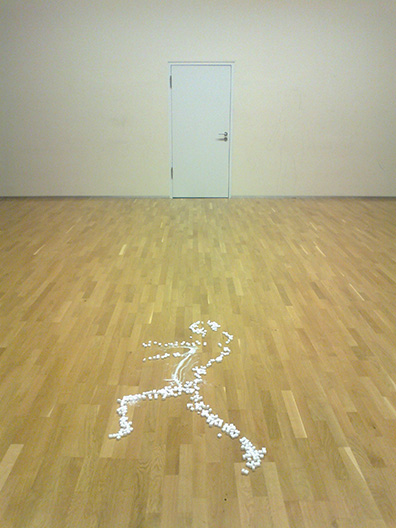
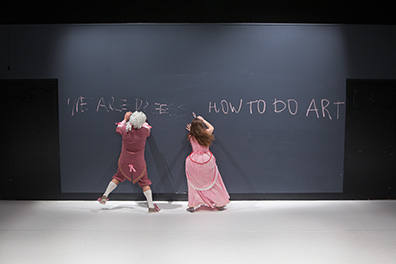
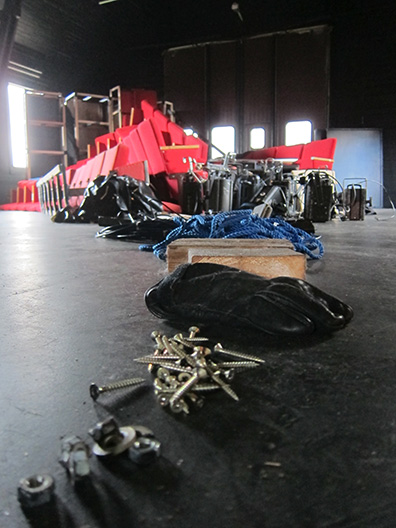
the diaries of HOW
Sonja Pregrad
Aug 24 – Sep 11, 2015
The diaries of HOW
what is your dancing about?
what do you do when you dance?
how do you move the space?
how do you space your thinking?
how do you speak your dance?
how do you move your language?
In The diaries of HOW you will learn about your own process of making/dancing. The workshop will provide different frames of work through which you will be invited to practice and expand your awareness of what your interests relating to physical performance are, how you make choices and how you navigate your process of work. The module will unfold through four chapters, each building on the tools of the previous one. Each chapter will be structured into specific time frames and will provide an entrance to the experience of one’s own physicality and to different aspects of creating performance. The workshop is an individual journey and will focus on the format of the solo. However, by collectively going through this individual process in parallel, we will create for each other support, focus and space for reflection.
time/space/body axis
We will begin by playing the basic gears of space, time and body.
Playing the time:
We will look at how we perceive time while we’re performing or watching, moving or in stillness. How do you perceive the time of one minute, how fast or slow does it pass? We will practice navigating time, sensing the organic feeling of a beginning, middle and an end within one minute, becoming familiar with an embodied sensation of time. We will look at how the inherent dramaturgy of time unfolds, and how we make choreographic choices within it.
Playing the space:
We will study the room through our body, placing ourselves in relation to it. We will see how different proximities of the body to concrete surroundings triggers different qualities of physical engagement. We will also look at how movement influences and defines the space of our body, and how can we play with our awareness of this bodily space in conversation with the concrete space of the room.
Playing the body:
We will engage the moving body through its anatomy and breath, and in relation to your own images, intentions and language. We will speak as we move, and practice the shift between different intentions within our dance, becoming present to the fluid interplay between thinking and moving. Through these explorations you will have a hands-on experience of what kind of spatial configurations, time constraints, bodily sensibilities and questions you are naturally drawn to.
materiality of the process
Once each of us has located our own current interests within the play, we will proceed by translating them through different modes of expression. Using the format of short time frames you will be invited to shift between movement, speaking, writing, designing the space, working with objects, sounds and other materialities at your disposal. Continuing to deal with the same specific interest, you will have to speed up your choice-making process to adapt to the specific contexts that each mode offers. This will help you to trace how your decisions resonate in different territories, developing multiple perspectives of your leitmotifs.
insisting
The next step will be holding on to a chosen lead of investigation, to inhabit it for a stretched length of time. By insisting on one theme/task/quality, with all the knowledge from the previous chapters in our tool bag, we will practice the vital skill of on-going-doing – how to go beyond one’s habits, how to insist in the face of doubts, how to recognize the moment of getting stuck, how to facilitate getting un-stuck.
diary
Throughout the module you will keep a written diary of HOW – noting down your questions, ideas, discoveries, anecdotes, doubts, intuitions, images, knowledge, traces. I will invite you to use the diary as your workbook – taking time to write in it, taking the information out and translating it back into your physical practice, re-writing, analyzing and contextualizing, in order to create a layered conversation with yourself through your notebook-interface. As a final step I will ask you to reflect on your process by making your workbook readable for others, so they too can trace the visible lines of your artistic research and development. We will look at different ways to underline, pick out, add materials and explanations, in order to make your specific process visible. You can then take the diary with you as a personal reference of this working methodology and as a source of inspiration for further creations.
––––––––––––––––––––––––––––––––––––––––––––––––––––––––
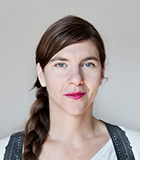 Sonja Pregrad started learning dance and how to make it as a teenager at the State dance school in Croatia, studying Laban’s theory of movement. Struggling with the 80s and early 90s preconceived notions of how a dancer should look, she left for Holland to study experimental dance at ArtEZ/EDDC in Arnhem, looking into teaching, performing and dance making. Her main influences from that time are functional anatomy, the combination of codified and non-codified release dance techniques, the practice of improvisation and composition with Mary O’Donnel, Eva Karczag, Emio Greco, David Zambrano, Thomas Lehmen (a.o.).
Sonja Pregrad started learning dance and how to make it as a teenager at the State dance school in Croatia, studying Laban’s theory of movement. Struggling with the 80s and early 90s preconceived notions of how a dancer should look, she left for Holland to study experimental dance at ArtEZ/EDDC in Arnhem, looking into teaching, performing and dance making. Her main influences from that time are functional anatomy, the combination of codified and non-codified release dance techniques, the practice of improvisation and composition with Mary O’Donnel, Eva Karczag, Emio Greco, David Zambrano, Thomas Lehmen (a.o.).
After graduating she worked as a dancer in Croatia, Austria, USA and Germany with Willy Dorner, Keren Levi, Monica Gomis, Irma Omerzo, Scott Wells and others, as well as with a visual artist Sanja Ivekovic, having re-enacted her work 'Practice makes a Master' in visual art contexts such as at MoMA, New York, ZKM, Karlsruhe, AdK, Berlin etc. In 2007 she co-founded ‘Improspections’, an initiative for the affirmation of improvisation and performing arts in the Zagreb art scene (www.improspekcije.com). In Zagreb she also teaches at the Fine Arts Academy, where she has developed through her seminars the practice of “re-materialization” (shifting of the process through different media).
Sonja has created and performed several solo and collaborative works, based on one hand on researching embodiment - affective states, synesthetic experiences - and on the other, the body as an object of language, theatre and society – how it is being encapsulated (objectified) and how, in it has its own agency (it as a subject), and the dynamic between these two polarities.
In 2011 she came to Berlin to reconsider her making practice through studying an MA in Solo/dance/authorship and she now lives between Berlin and Zagreb. In Berlin, she has been performing for different artists such as Boris Charmatz, Isabelle Schad, Alexandre Achour, Frederic Gies, Shahryar Nashat, Lea Martini, Juli Reinartz a.o., as well as producing her own works, SEQUEL FOR THE FUTURE // a dance in 2043 / a dance in 2044 with Willy Prager, Already made theatre with Nina Kurtela and Igor Koruga and Dishevelled with Johanna Chemnitz. She is co-founder of the arts organization ‘Fourhanded’ and co-organizer of the interactive dance magazine ‘TASK’ with TALA Dance Centre.
––––––––––––––––––––––––––––––––––––––––––––––––––––––––
photos:
Damir Žižić
Anne Sophie Malmberg
Barbara Blasin
Nives Sertić
Jasenko Rasol
Sonja Pregrad
Nina Kurtela
